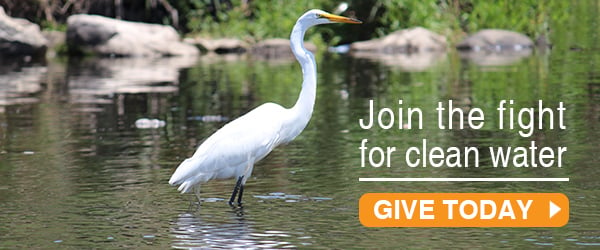Introduction to the Trustees’ GE PCB NRD Assessment
The Hudson River NRDA trustees:
- National Oceanic and Atmospheric Administration (NOAA) representing the U.S Department of Commerce (DOC)
responsible for coastal and marine resources - U.S Fish and Wildlife Service, representing the U.S Department of the Interior (DOI)
responsible for national wildlife refuges, migratory birds, and threatened and endangered species - New York State Department of Environmental Conservation (NYSDEC)
responsible for the publicly held state natural resources
The Trustees hold the responsibility to restore the natural resources injured by the release of PCBs. They are tasked under federal law (CERCLA) to assess injuries to natural resources, recover damages and seek to restore the injured resources to the baseline condition that existed prior to the release of the hazardous substance. The trustees must provide evidence to demonstrate that the injury to the natural resource or the public’s ability to use that resource has been caused by the PCBs. The Trustees follow the Federal Regulations for Natural Resource Damages Assessments (43 CFR Part 11) to guide this process. The Trustees have recently expressed concerns that the Phase 2 cleanup as planned, in certain areas, may not be sufficient to ultimately provide for restoration of the River in those areas.
NRDA
The Hudson River Natural Resource Damage Assessment (NRDA) evaluates the environmental damage and injuries associated with the GE PCB contamination of the Hudson River. The NRDA will assess the damages that may be compensated, whether monetarily or through restoration projects, by GE.
NRDA Studies:
Completed studies:
Organochlorine and Metal Contamination of Hudson River Aquatic Insects
An investigation testing and analyzing emerging adult aquatic insects for PCBs and confirming the PCB contaminant pathway from the sediments, up the food chain, into tree swallows.
Surface Water Injury Report 2008
An evaluation of water samplings tested for PCBs determining whether PCBs have injured the surface water of the Hudson River. It concludes that the Hudson River from Hudson Falls to the Battery in Manhattan is an injured resource.
2007 Amphibian Fact Sheet
An investigation of Bullfrog tadpoles and sediment samples analyzed for PCBs confirming the exposure of amphibians to PCBs.
Preliminary Investigations of PCBs in Hudson River Bats
An investigation analyzing bats for PCBs that demonstrate PCB exposure.
Determined to continue:
Mink Investigation for the Hudson River NRD- Fact Sheet 2006
The confirmation of the adverse effects of PCB exposure on mink and determination of Trustees to further investigation in 2006.
Planned:
Study Plan for Waterfowl Injury Assessment 2008
& Waterfowl Investigations 2007-2008
An investigation planned to determine whether Hudson River waterfowl have been injured by PCBs.
Preliminary Investigations for Frogs and Sediments 2004
A plan for preliminary investigations for frogs and sediments, which will be used in order to determine whether a full-scale study of the effect of PCBs in the Hudson River on amphibians will be conducted.
Avian Investigations for the Hudson River NRDA 2006
An investigation planned to evaluate effects of PCB exposure on birds that will help the Trustees create plans to restore the injured natural resources.
Sediment Toxicity Pilot Study for the Hudson River NRDA
An investigation planned in 2008 to determine the toxicity of PCB-contaminated sediments to sediment-dwelling organisms.
2001 Status Report Fish Health
An investigation planned for 2001 that would determine the biological impacts of the PCB contamination on fish species.
2002 Fact Sheet – Preliminary Investigations of Bird Injuries
Preliminary investigations set to help select birds for future study, analyze bird eggs for contaminant, determine location of nesting and feeding of Hudson River birds, and monitor bald eagle nests.
Floodplain Data Report January 2010
— To find out more —
www.dec.ny.gov/lands/25609.html
www.fws.gov/contaminants/restorationplans/HudsonRiver/index.html
www.darrp.noaa.gov/northeast/hudson/pdf/HUD_DEL_SETAC_2011PCBposter.pdf
www.darrp.noaa.gov/northeast/hudson/pdf/HUD_DEL_SETAC_2011habitatposter.pdf

